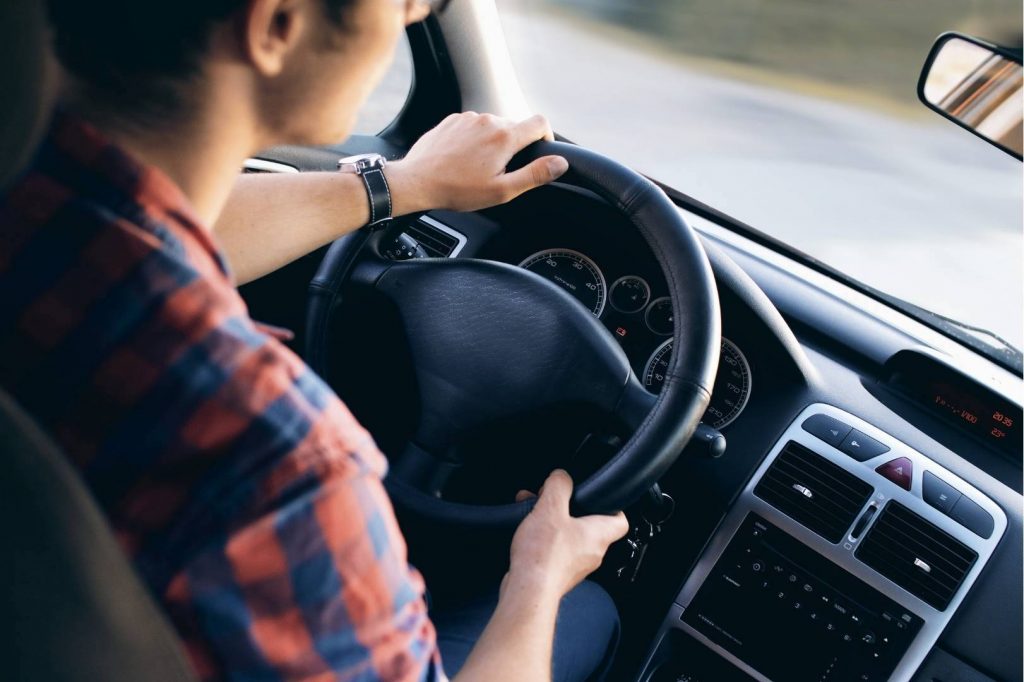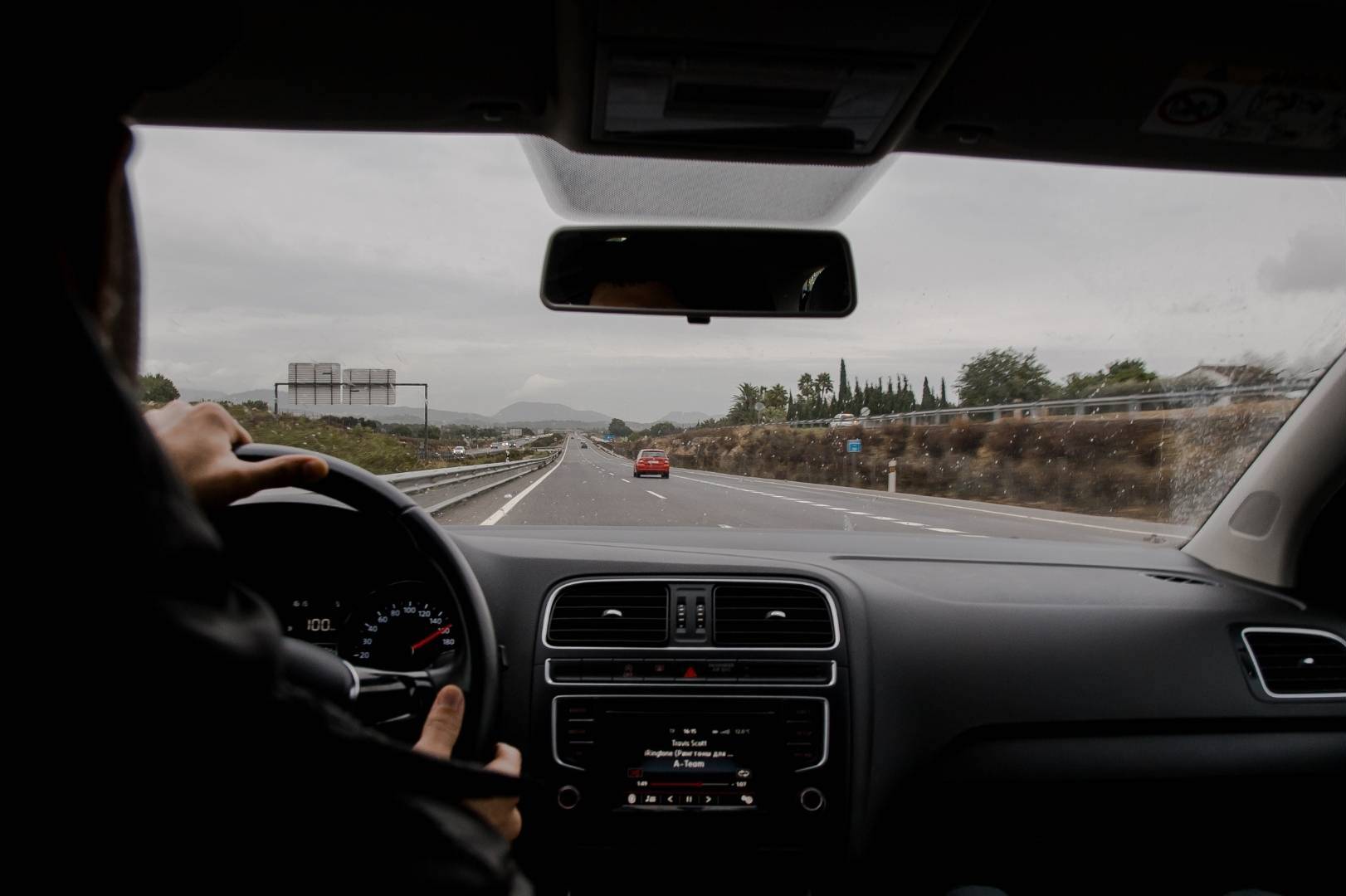Driving can be stressful. Commuting to work on busy roads can be frustrating, other drivers cut us off, there are delays, diversions can cause us to be running late for work, an interview, or a meeting. It’s easy to let our thoughts and emotions get the best of us.
It’s incredible -yet also scary- that we can be on autopilot, steering the wheel, changing gears, applying pressure on the breaks, navigating through busy roads, changing lanes, adjusting our driving for corners, whilst our minds are somewhere else entirely.
But does this come at a consequence? It can. If we’re totally consumed by thoughts, planning, predicting, worrying, getting anxious, then our body becomes tense, and we release stress hormones. Not only that, but we’re being distracted drivers, potentially putting ourselves and others at risk.
So, what can we do to be calmer, more present and at peace whilst driving? Well, this article provides you with mindfulness actions for driving that you can apply to any journey you embark on.
Focus on Your Breathing

Focussing on the breath and slowing it down is always an effective way to enter the present. Plus regulating your breathing has many benefits, such as increasing oxygen absorption and supply, lowering your heart rate, reducing blood pressure, and does wonders for your nervous system.
So, the next time you enter your vehicle, pay attention to your breathing. Is it sharp, shallow, deep, fast, slow, irregular, or steady?
Becoming aware of your breathing helps to inform you about what kind of state you are in. If you’re relaxed and calm, your breathing will reflect this. If you’re feeling anxious and stressed, your breathing is likely to be erratic and fast paced.
That way we can be more aware of our feelings and emotions before allowing them to influence our driving in a negative way. And by consciously taking deeper breaths, slowing them down and equalising them, we can become calmer, more at ease, clear headed and relaxed. Setting us up for a more contented drive.
So, be mindful of your breathing before you leave on your journey, whilst you are driving, and when you arrive. Inevitably your mind will wonder off but that’s ok and totally normal. Just say ‘here’s thinking’ and simply shift your focus back onto your breath.
Body Awareness

Similar breathing, paying attention to what’s going within the body can tell us how we’re really feeling. Are your muscles tense? Do you have butterflies in your stomach? Are you fidgeting? Is your heart beating uncontrollably?
These are all tell-tale signs that you are not at ease. So, how will you be on the toad with other drivers? Are you more likely to act out aggressively, impatiently, or with lack of compassion? Most likely yes. By being aware of what’s going on within, we are much less likely to react unconsciously and impulsively.
If you’re feeling angry, stressed, impatient etc, it’s ok, you’re human. Just be mindful of the turbulence and be compassionate towards yourself. Speak to yourself, tell yourself ‘this is a moment of difficulty, it’s ok to feel this, let me feel it fully and bring it into awareness’.
Notice Your Influence on the Vehicle

When you’re driving any vehicle, you are connected to it in that moment. Every little movement you do with your body influences how it will manoeuvre. You can use this to your own benefit to be more present.
Pay attention to how strongly you grip the wheel, how your hands and arms move whilst turning it, and how that causes change in direction, feel the turns intently. Notice the pressure you apply with your feet on the pedals and how that speeds up or slows down its momentum.
Feel the vibrations of the engine and how it changes depending on the speed you are going. Do you notice it vibrating through your hands or feet? How about the sounds of the car? The rumbling engine, the indicator clicking, how does the sound change if you slow down or speed up?
Is your window open, can you hear the wind blowing through it? You get the idea. These are all effective ways to develop a present driving experience.
Focus More Intently on the Road

Sounds just like common sense, but instead of being in autopilot mode, really focus on the road and what’s going on around you. The flow and movement of the cars, the sounds of them passing by, the speed of yourself and other vehicles, how you are manoeuvring, and your position on the road.
Not only will this force you to be more present, but it will also help you to be a better and safer driver. One who is less likely to be distracted, lost in thought, and nonattentive. Be mindful of yourself and others on the road.
Go with the Flow, Obstacles Will Always be There

When I’m going from A to B, I like to get there as quickly as possible. So, when I encounter diversions, traffic, traffic lights, bad weather, and any other obstacles that slow me down, I find it difficult not get inpatient and start complaining in my head.
During these times it’s important to remember that these things are entirely out of our control. There is absolutely nothing we can do to correct the route, speed up traffic, change the traffic lights, or improve the weather.
Instead, work on acceptance and surrender. Why make it worse with negativity, complaining, and catastrophising? If you can’t change, leave, or improve any situation in life, then acceptance is the only solution.
Be Compassionate Towards Other Drivers

Other people can drive us up the wall… When we see a car in front of us going too slowly, driving inappropriately without caution, or cutting us off, it can be infuriating. It’s easy to just see the vehicle and forget that it’s human being behind the wheel.
They could be old, lost, running late themselves, preoccupied, stressed, suffering from mental health, or a tourist struggling to drive on the other side of the road. Of course, they may just be an angry, rude individual but why are they like that?
Most likely they are suffering themselves from difficulties going on within their own life. Or perhaps they were raised in a house where expressing anger was the norm. This may be the only habitual way they know to behave. See my point?
I’m not saying their actions on the road are justified, but it helps to shift our perspective to not see everything as just black and white. Don’t get me wrong, cultivating compassion towards complete strangers that you can’t even see is challenging.
But by cultivating compassion for others on the road, you are also helping yourself. Instead of feeling impatient, angry, and annoyed, you can attempt to be understating whilst generating feelings of kindness and warmth. How? Try this simple exercise.
When cars are passing by you, simply say to them in your head or out loud ‘may you be fee from suffering’, ‘may you be well’, ‘may you be happy’. Give it a try, it may feel odd, unnatural, or uncomfortable at first but it will feel more genuine over time.
Driving Doesn’t Have to be Stressful
I hope that these mindfulness actions for driving will help you to be a more present driver. Commuting, traffic, and congestion can be stressful enough, why not see if you can work on making your next journey more pleasant?
Try to practice some of the pointers above one by one. Don’t overwhelm yourself by trying to do it all at once. Start with the breath, just see if you can be more attentive to your breathing as you drive. Incorporate the body next and then see if you can include the other actions on the list.
Do you dislike or enjoy driving? What do you find challenging about your journeys? I’d love to know in the comments below.
Take care of yourselves,
Chris from Mindfulness Actions
